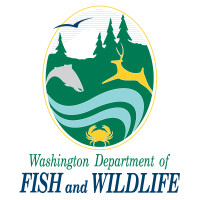2025 Season Setting- Prohibition of Feeding Deer, Elk and Moose CR 102
2025 Season Setting- Prohibition of Feeding Deer, Elk and Moose CR 102
This rule making proposal offers one WAC amendments. To click on the 'submit' button, you will need to hover near your name.
View WDFW rulemaking website for 2025 Season Setting- Prohibition of Feeding Wildife* Deer, Elk and Moose:
(*The department will recommended removing the term 'wildlife' from the title at the upcoming rule hearing)
Purpose of the proposal:
WAC 220-440-260 Prohibition of feeding wildlife.
The purpose of this proposal, if adopted, is to make it unlawful “to place, deposit, distribute, or scatter feed including but not limited to grain, hay, minerals, salt, fruit, or other such substances or food types to feed, lure or attract deer, elk, or moose not lawfully held in captivity” statewide (unless otherwise excepted in the existing rule).
The anticipated effect of this rule is the prohibition of feeding of deer, elk, or moose (unless the activity is excepted as written) and the education of the risk of introducing or spreading CWD in the state by reducing unnatural concentrations.
Reasons why a rule may be needed and what may be accomplished?:
WAC 220-440-260 Prohibition of feeding wildlife.
Baiting and recreational or supplemental feeding of any wildlife species has the potential to artificially concentrate animals (Janousek et al. 2021) and increase the transmission of infectious disease agents among them (Sorenson et al. 2014). Attraction of animals to artificial feed can also result in contamination of the feedstuffs and the environment by disease agents, such as prions, that are present in saliva, urine, and feces of CWD-infected cervids (Mathiason et al. 2009, Henderson et al. 2015, Plummer et al. 2017). For example, it has been demonstrated that white-tailed deer with CWD deposit prions at mineral licks, creating environmental reservoirs of CWD prions (Plummer et al. 2018). According to the Association of Fish and Wildlife Agencies (AFWA), the best management practice to reduce the risk of CWD transmission and establishment through unnatural concentrations of cervids, is for states and provinces to eliminate the baiting and feeding of all wild cervids using regulatory mechanisms, such as jurisdictional bans (Gillin and Mawdsley, 2018).
Please note: All comments received by WDFW are part of the public record and will be available for public viewing - so please do not include private information in the text of your comments. Comments are subject to disclosure under the Public Records Act, RCW 42.56.
